Welcome to Kusuri-uri’s House of Medicine. This is quite likely where the mysterious merchant lives when he is not out killing mononoke. Here you will find many strange curiosities and ephemera that Kusu has found or remembers from his travels. Youkoso... Main blog @mononokehunters | IF YOU USE THIS BLOG TO FARM ART TO REPOST UNCREDITED YOU ARE SHIT
Don't wanna be here? Send us removal request.
Text
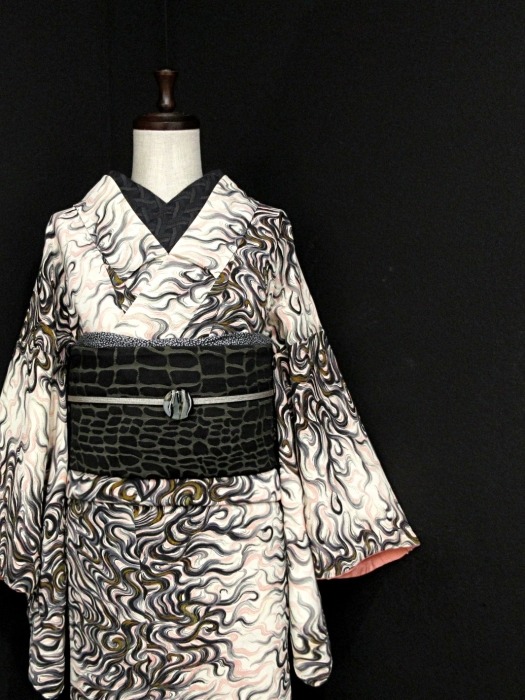
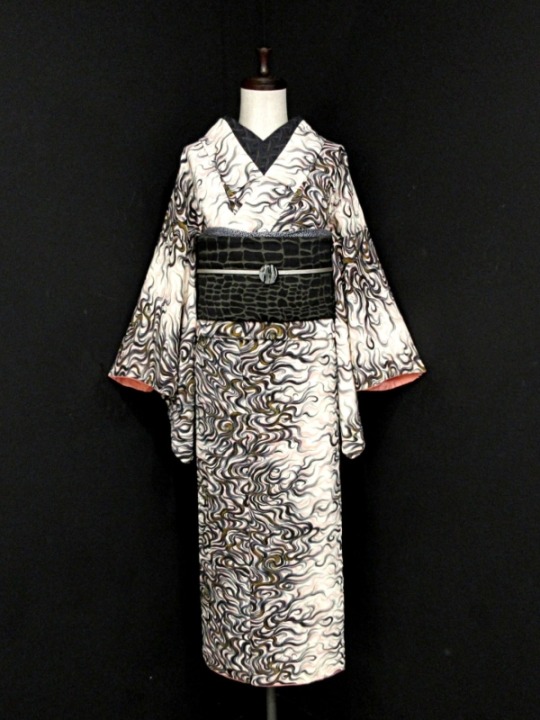
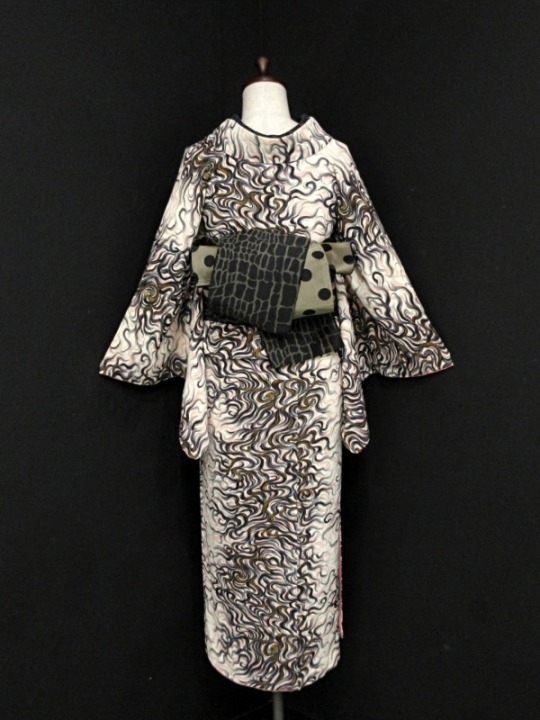
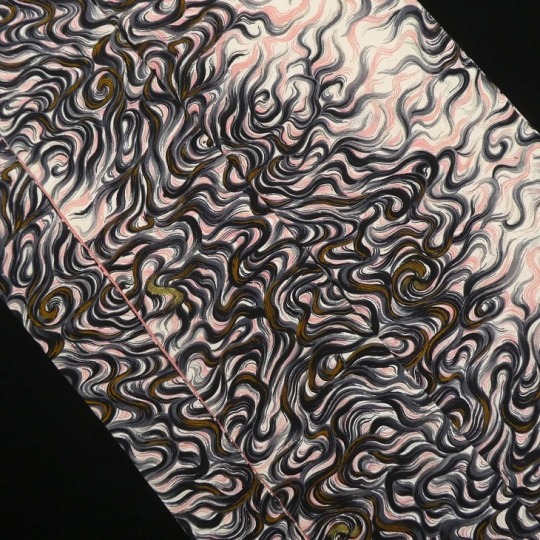
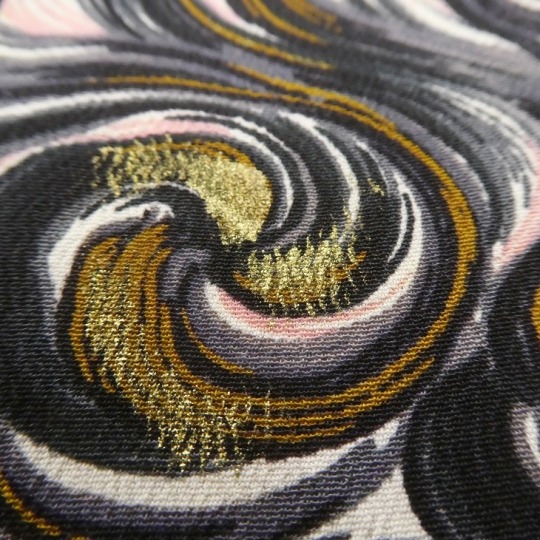
Eye-catching vintage kimono with wiggly lines reminding me of winding roots or smoke tendrils. The golden and pink accents nicely make them pop, I LOVE this design!
834 notes
·
View notes
Photo


Painted furisode. Last quarter, 20th century (1975-2000), Japan. A white rinzu (damask) furisode featuring “ume” (plum blossom) motifs. The damask woven background is of flower and butterfly motifs, while the foreground with it’s plum branches and blossoms are painted with yuzen and pigment dyes by talented artists. 50” from sleeve-end to sleeve-end x 62” height. The kimono Gallery
366 notes
·
View notes
Photo

Japanese wooden lion and guardian dog. Dated 1315. Height: 56 cm and 60 cm. Photo: Hiroshi Yanagi Oriental Art (Kyoto, Japan).
788 notes
·
View notes
Text

Chiaki Shuji — Gravitation (watercolor on handmade paper, 2008)
1K notes
·
View notes
Photo





More pictures from the chirimen exhibit! A very summery display of morning glories and hydrangeas, plus cicadas (for @gachimushi), some froggy absolute units, and assorted vegetables.
#once many moons ago#i found pictures of a mononoke themes chirimen mobile#tiny box nue daruma etc the works#it was delightful
1K notes
·
View notes
Text
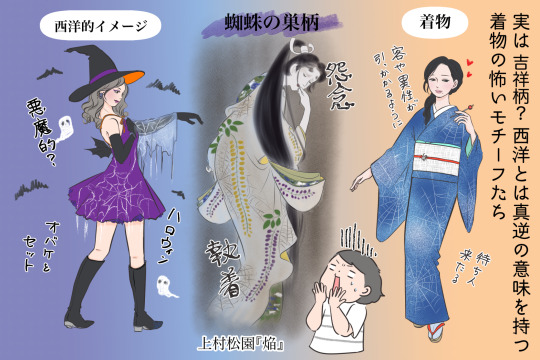
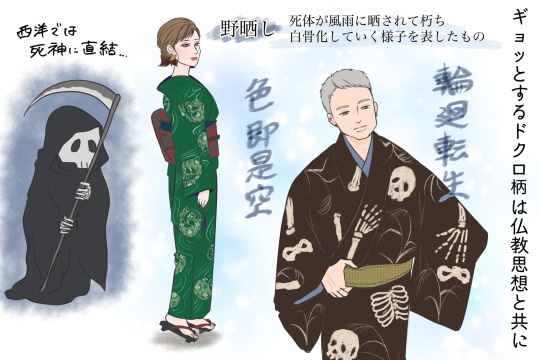

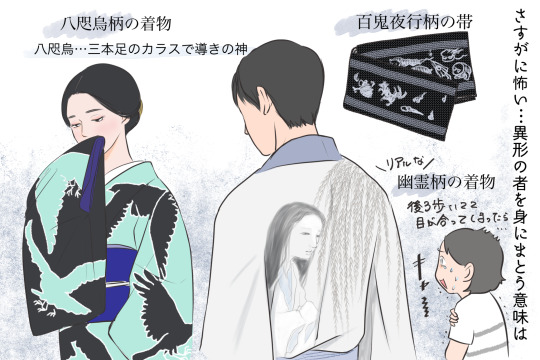
Lovely article+illustrations by Kimono Ichiba (via Tanpopo <3), overviewing famous "scary"patterns... which are in fact often auspicious as traditional Japanese patterns ;)
I believe I have them all on the blog somewhere but it's nice having them in one place so let's go!
Spiderwebs (kumo no su)
In ancient China, spider were seen as auspicious messengers connecting Heaven to Earth.
As the spider catches its prey in its web, spiderweb came to signify "grasping happiness".
Apparently during Edo period, prostitutes and geisha used spiderweb patterned items as a good luck charm (meaning something like "this customer will come back").
A very famous spiderweb depiction is the Lady Rokujo ukiyoe [焔 honô (the flame of passion)] by female artist Uemura Shoen. Wisteria caught in the web could mean ``I hope [Prince Genji] will come tonight'' which is pretty sad considering her story T_T
Skulls (dokuro)
Exact name for human remains pattern is "nozarashi" (lit. "weather beaten") ie bones scattered in a field. This depicts a corpse turned to bones/unveiled from its grave by the elements.
Skulls are thought to ward off evil and bad luck. Bones can also symbolize a do-or-die spirit, or hope for rebirth after death.
OP stresses a theory linking bones pattern to a buddhist saying 色即是空 shikisokuzekū "form is emptiness, matter is void, all is vanity". An interpetation is that we'll all turn to dust one day so we're all equal.
Bones patterns are often seen during Obon (Festival of the dead) season.
Monsters, ogres and ghosts (yôkai / oni / yûrei)
Monsters patterns were then worn to ward off bad luck and evil spirits. Reasoning is: let's repel scary things by wearing an even scarier monster!
Fearsome monsters were especially use by people with dangerous jobs, like Edo period firemen.
Firemen often had the lining of their heavy fire attire (火事装束 kajishouzoku) embelished with lavish designs of brave heroes and fantastic monsters. It was both a talisman and a way to show that they did not fear danger or death.
Another reason behing monsters patterns is the Edo period love for "scary" entertainements, be it ghost stories, parlor or other types of games, art (see for ex. Utagawa Kuniyoshi), etc. And Edo city dwellers were all about being fashionable so a monster pattern would have been considered quite iki!
1K notes
·
View notes
Photo
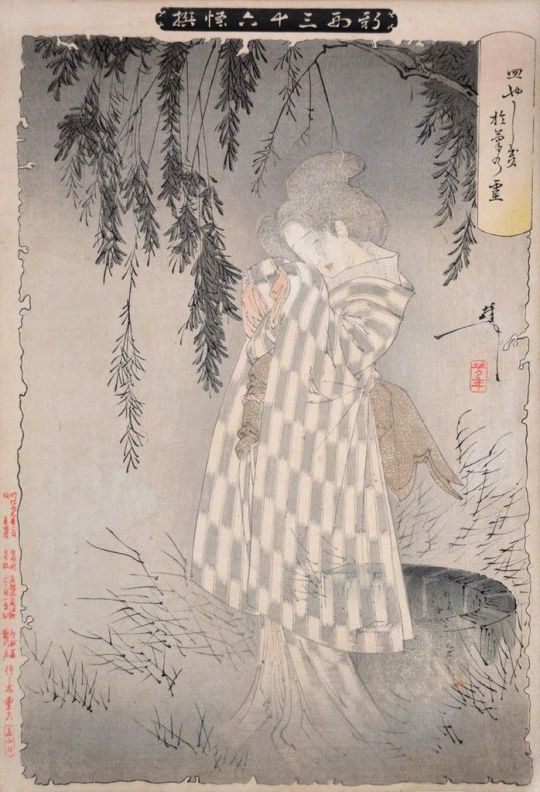
The Ghost of Okiku at Sarayashiki, Tsukioka Yoshitoshi, 1890
59 notes
·
View notes
Text
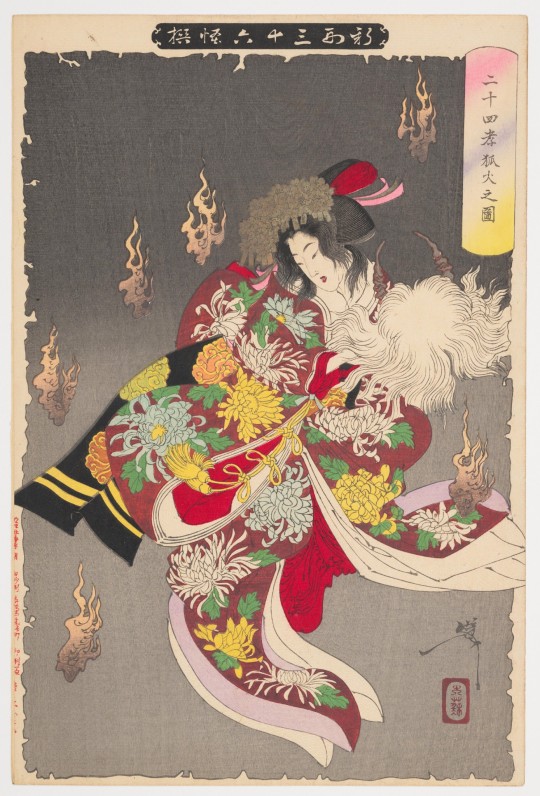
Titles: Princess Yaegaki following the Foxfires in a Scene from the Play Nijūshikō (Nijūshikō kitsunebi no zu)
From the series: Thirty-six supernatural beings in new forms (Shingata sanjūrokkaisen)
Date: 1892
Artists: Tsukioka Yoshitoshi (Japanese, 1839–1892) Published by Sasaki Toyokichi; 1-banchi 1-chōme Owarichō, Kyōbashi-ku, Tokyo
Medium: Color woodcut
Dimensions: Sheet (ōban tate-e approximately): 15 1/2 × 10 1/2 inches (39.4 × 26.7 cm)
Classification: Prints
Credit Line: Purchased with funds contributed by the E. Rhodes and Leona B. Carpenter Foundation, 1989
Accession Number: 1989-47-627
Geography: Made in Japan, Asia
Context: Period: Meiji Period (1868-1912) Reign: Meiji Emperor (1868-1912)
9 notes
·
View notes
Photo

Utagawa Hiroshige’s Horikiri Iris Garden, 1857
488 notes
·
View notes
Photo

Kimono. Taisho period (1912-1926), Japan. A bold silk kimono featuring origami crane bird motifs. 46" from sleeve-end to sleeve-end x 57" height. The Kimono Gallery
85 notes
·
View notes
Photo

Shokyokusai Tenkatsu, a Japanese magician, with her assistant.
502 notes
·
View notes
Photo



New Designs for Applied Arts, créées par Tanaka Yohu et publiées par Yamada en 1892.
167 notes
·
View notes
Photo
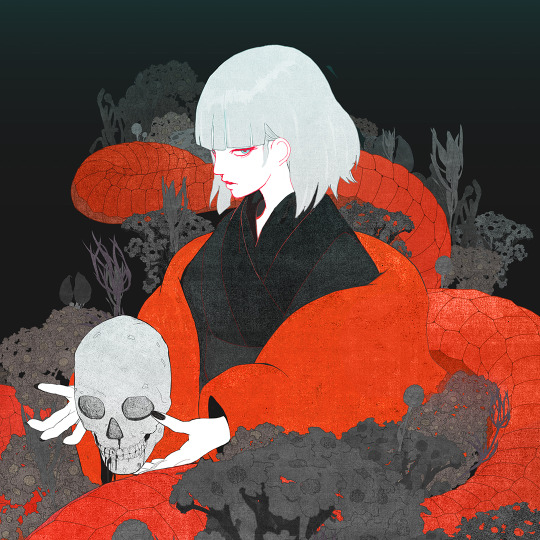
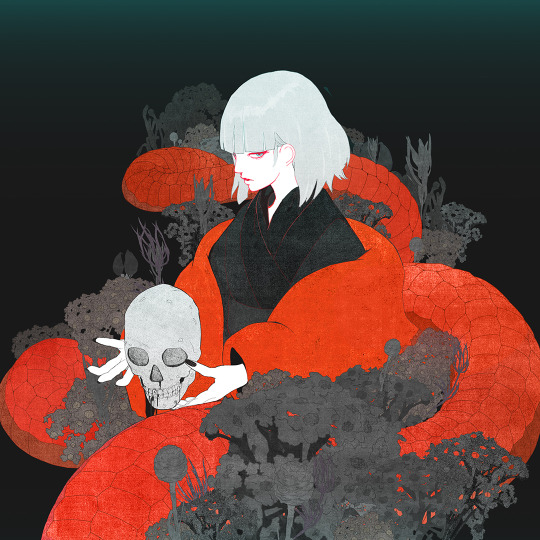
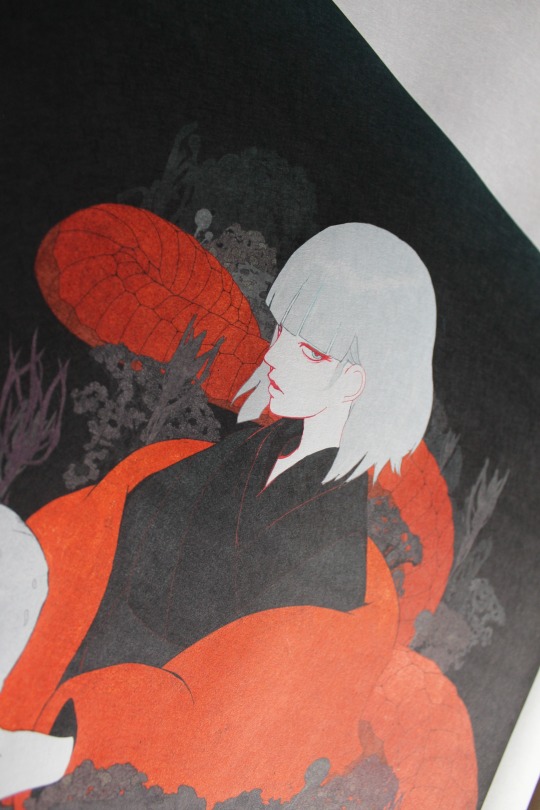
Dn-B -original work ©︎Kotaro Chiba 2023
INSTAGRAM / @kotaro_chiba :
https://www.instagram.com/kotaro_chiba/
PRINT SHOP
https://kotarochiba.gumroad.com/l/vzeudv
1K notes
·
View notes


